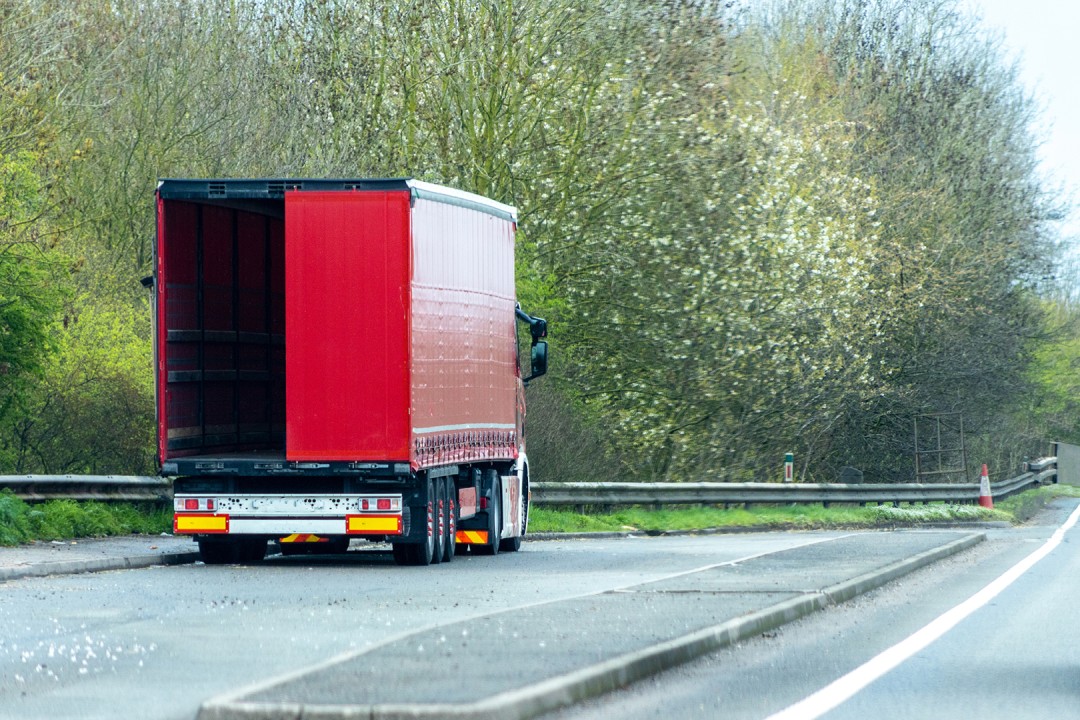
Susie Jones
Ar vairuotojai renkasi stovėjimo aikšteles, o ne degalines
Sukurta: 19-08-2024
•
Atnaujinta: 19-08-2024
2022 m. Jungtinėje Karalystėje užregistruota daugiau nei 5 000 pranešimų apie nusikaltimus, susijusius su krovinių gabenimu, o tai sudaro maždaug 66 mln. svarų sterlingų nuostolį. Padidėjęs krovinių nusikalstamumas kelia kritinę grėsmę tiekimo grandinėms, įmonėms ir vartotojams - tai kelia didelį susirūpinimą krovinių pervežimo sektoriaus darbuotojams.
Kembridžšyro policijos paskelbtoje ataskaitoje nurodoma, kad 46 % visų krovinių vagysčių įvyksta gatvėse ir aikštelėse, o 27 % - degalinėse. Nepaisant to, socialinis klausymasis rodo, kad daugelis vairuotojų dėl įvairių priežasčių ir toliau stato automobilius stovėjimo aikštelėse.
Problemos, susijusios su stovėjimo aikštele
Vairuotojams stovėjimas nakčiai stovėjimo aikštelėje dažnai yra paprasčiausias ir ekonomiškiausias variantas. Tačiau ji turi keletą trūkumų, kurie gali neigiamai paveikti vairuotojo psichinę sveikatą ir saugumą.
Vairuotojams reikia daugiau patogumų, pavyzdžiui, tualetų, dušų ir maisto. Švarių patalpų trūkumas gali padidinti diskomfortą ir neigiamai paveikti miegą, koncentraciją ir psichinę sveikatą.
Vairuotojų sauga - stovėjimas prie stovėjimo aikštelės kelia papildomą pavojų vairuotojų saugai. [AA] (https://www.transport-network.co.uk/Highways-AA-warns-of-danger-lurking-in-lay-bys/7695#:~:text=The%20Too%20close%20for%20comfort,the%20vehicles%20that%20are%20hit.) atlikto tyrimo duomenimis, du trečdaliai mirtinų eismo įvykių, į kuriuos pateko stovinčios transporto priemonės, įvyko dvipusio eismo kelyje, o daugiau nei pusė nukentėjusių transporto priemonių buvo sunkiasvorės krovininės transporto priemonės.
Krovinių vagystės. 2023 m. birželio-liepos mėn. krovinių vagysčių skaičius pramonėje išaugo 380 %, o tai rodo, kad reikia saugių ir patikimų stovėjimo aikštelių. Kadangi oportunistiniai vagys renkasi stovėjimo aikšteles, vairuotojai rizikuoja prarasti krovinius, o transporto parkai - milijonus svarų sterlingų.
Kodėl vairuotojai stato automobilius stovėjimo aikštelėse
Nepaisant rizikos, per Facebook atlikta socialinė apklausa parodė, kad 70 proc. vairuotojų dėl kelių priežasčių buvo mažiau linkę rinktis sunkvežimių stovėjimo aikštelę, o ne stovėjimo aikštelę:
Saugumas
Iš socialinės žiniasklaidos atsiliepimų matyti, kad 43 proc. sunkvežimių vairuotojų nusprendė nestovėti sunkvežimių sustojimo aikštelėje ar degalinėje dėl saugumo priemonių trūkumo.
"Automobilius statau tik šalikelėse arba pramoniniuose rajonuose. Kai stovėdavau paslaugų ir (arba) sunkvežimių sustojimo aikštelėse, man nupjaudavo užuolaidas", - teigia sunkvežimio vairuotojas Lukas.
Sunkvežimių sustojimo aikštelių Jungtinėje Karalystėje sauga ir saugumas yra karšta krovinių vežimo pramonės diskusijų tema, o vairuotojai prašo vyriausybės suteikti daugiau paramos papildomiems saugumo įrenginiams. Iš ankstesnių atsiliepimų matyti, kad vairuotojai pageidavo, jog sunkvežimių mokesčio lėšos būtų investuojamos į saugesnes, higieniškesnes ir prieinamesnes automobilių stovėjimo aikšteles.
Socialinėje žiniasklaidoje 59 % sunkvežimių vairuotojų teigė, kad Jungtinėje Karalystėje, palyginti su Europa, nėra pakankamai saugių ir patikimų sunkvežimių sustojimo aikštelių. Šią nuomonę patvirtina ir [SNAP's Truck Park Tour] (https://snapacc.com/truckpark-tour-2023/) atsiliepimai, kur 31 % Europos vairuotojų teigė, kad jiems naudingiausia naudotis išskirtinėmis, saugiomis SNAP vietomis. Saugumo organizacija TAPA yra plačiai pripažinta Europoje - daugelis vietų turi 1, 2 arba 3 lygio sertifikatus.
Tuo tarpu Jungtinėje Karalystėje yra tik dvi vietos, turinčios TAPA sertifikatą - jas akredituoja SNAP PSR 3 lygio įgalioti auditoriai. "Formula Services" ir "The Red Lion" turi 3 lygio sertifikatus - "The Red Lion" užregistruotas vienas pažeidimas, o "Formula Services" - nė vieno, nors jos įsikūrusios didelio nusikalstamumo rajone.
TAPA standartų, mokymo ir sertifikavimo skyriaus vyresnysis vadybininkas Markusas Prinzas aiškina: "Visiškai remiame visus veiksmus, kuriais siekiama užtikrinti veiksmingą ir saugią sunkvežimių stovėjimo aikštelės infrastruktūrą ir pagerinti sunkvežimių vairuotojų, transporto priemonių ir krovinių saugą. Tikime, kad, užtikrinant atvirą ekosistemą, skirtą saugių sunkvežimių stovėjimo aikštelių techniniam ir ekonominiam optimizavimui, galima paskatinti perėjimą prie saugių sunkvežimių stovėjimo aikštelių."
Bendrovės nenoras
30 proc. vairuotojų teigė, kad jų automobilių parko įmonės nenori mokėti už sunkvežimių sustojimo vietas ar degalines. Vienas vairuotojas paaiškino:
"Deja, vis mažiau įmonių moka už automobilių stovėjimo aikšteles nakčiai, įmonės dirba tik iš paskutiniųjų, mažina darbuotojų skaičių, kad galėtų apmokėti sąskaitas, o automobilių stovėjimo aikštelių įplaukia vis mažiau."
Sunkvežimių stotelės su didžiausiu pajėgumu
"Galite pasakyti, kuriose stotelėse yra apsauga, nes iki 18 val. jos būna pilnos."
70 % vairuotojų išreiškė nepasitenkinimą dėl to, kad saugiose sunkvežimių sustojimo aikštelėse yra maksimalus vietų skaičius, todėl jiems nelieka kitos išeities, kaip tik stovėti stovėjimo aikštelėse. Panašios nuotaikos buvo išsakytos ir sunkvežimių stovėjimo aikštelių turo atsiliepimuose - daugelis išreiškė susirūpinimą dėl to, kad JK stovėjimo aikštelės yra pilnos dar prieš atvykstant.
TfL 2022 m. sunkvežimių stovėjimo aikštelių apklausos duomenimis, nepaisant to, kad 2017-2022 m. 12 % padidės aikštelių pajėgumai, jų nepakaks 21 % padidėjusiam transporto priemonių skaičiui per tą patį laikotarpį.

Naktinio automobilių statymo stovėjimo aikštelėse mažinimas
Vyriausybės finansavimas
18 proc. vairuotojų pageidavo, kad vyriausybė skirtų daugiau lėšų saugumo įrenginiams remti. 2023 m. rugsėjį Transporto departamentas skyrė 8 mln. svarų sterlingų 39 pakelės įrenginiams visoje Anglijoje įrenginiams ir saugumui gerinti. SNAP prieigos ir saugumo komanda pradeda remti finansavimą užsitikrinusias įmones, imdamasi veiksmų jų patobulinimams įgyvendinti. Iki 2025 m. pagal Vyriausybės suderinto finansavimo schemą galima gauti papildomą finansavimą iki 100 mln. svarų sterlingų.
Saugumo įrenginiai
Kad sunkvežimių vairuotojams būtų užtikrinta saugi ir patikima teritorija, sunkvežimių sustojimo aikštelės gali investuoti į patikimus apsaugos įrenginius - tokie produktai kaip vaizdo stebėjimo sistemos, ANPR, domofonai, užtvaros ir kioskai sustiprina aikštelės saugumą ir atgraso nuo nusikalstamos veiklos. SNAP Access & Security derina specialiai pritaikytus saugumo produktus ir rinkos patirtį, kad apsaugotų žmones, transporto priemones ir sunkvežimių stotelių turinį.
Ar JK sunkvežimių vairuotojai gali miegoti kelkraštyje?
Nuo 2017 m. lapkričio 1 d. DVSA įgyvendino naujas taisykles ir taisykles dėl vairuotojų poilsio tokiose vietose kaip gyvenamieji rajonai ir stovėjimo aikštelės. Vairuotojai gali būti nubausti iki 300 svarų sterlingų bauda, jei poilsio pertrauką praleidžia stovėjimo aikštelėje arba kelio pakraštyje.
Kaip sunkvežimių vairuotojams išlikti budriems vairuojant?
Sunkvežimių vairuotojai privalo laikytis tachografo pertraukų taisyklių, kad užtikrintų savo ir kitų kelyje esančių žmonių saugumą. Tachografo paskirtis - užkirsti kelią vairuotojų nuovargiui ir užtikrinti, kad vairuotojai ir darbdaviai laikytųsi taisyklių.
Nepaisant to, išvengti nuobodulio ir nuovargio kelyje daugeliui vairuotojų yra sudėtinga ir tai gali turėti įtakos jų savijautai. Dauguma vairuotojų kelyje mieliau klausosi muzikos ir podkastų, o sunkvežimių stotelėse ir degalinėse jiems patinka bendrauti su kitais vairuotojais.
Ar sunkvežimių vairuotojams leidžiama vežti keleivius Jungtinėje Karalystėje?
Vidutinis sunkvežimio vairuotojas prie vairo praleidžia maždaug 12 valandų per dieną. Siekdami kovoti su vienatve ir nuoboduliu, vairuotojai gali vežti keleivius, jei laikosi konkrečių FMSCA nustatytų taisyklių. Vairuotojai turi gauti raštišką leidimą iš savo įmonės, pateikdami prašymą vežti keleivius - šiame prašyme turi būti nurodyta kelionės trukmė ir datos.
Bendrieji reikalavimai yra šie: - Keleiviai negali būti nėšti.
Jie neturi sirgti sunkiomis ar lėtinėmis ligomis.
Jie turi būti ne jaunesni kaip dešimties metų.
Būtinas sveikatos draudimas.



